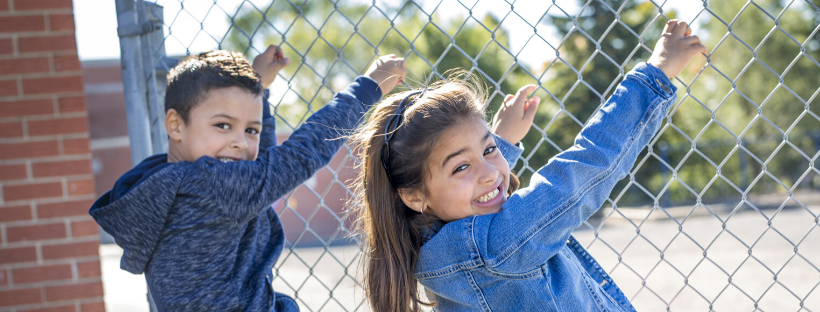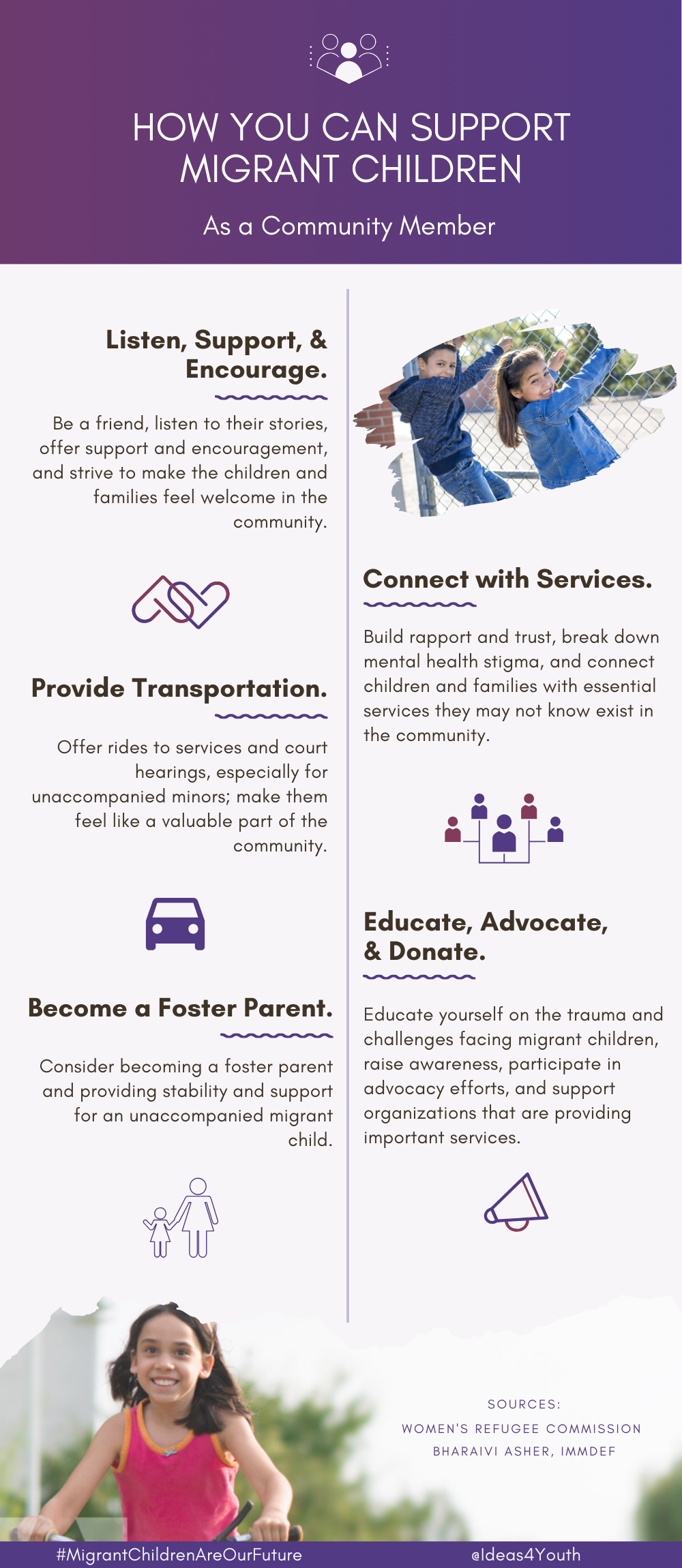
Out of all of the children living in the United States, over 25% live with at least one migrant parent. These first- and second-generation migrant children make up a significant portion of our population, having made the journey to the U.S. themselves or being born to parents that did. As community members, we must create welcoming and supportive communities for children and families who have faced and continue to face impactful traumas and challenges.
Knowing where to start, however, can seem overwhelming. This blog will provide ways that any community member can become involved in welcoming, supporting, and empowering migrant children. As the following ideas are implemented, it is important to internalize an empathetic approach with a mindset of
I am here with you and let’s do this together; not I am here for you, to save you, or to make things better for you.
Additionally, think about what you can learn from your experiences with migrant children and families. A great thing about integration into a community or society is that it is a two-way process; it involves change experienced by migrants as well as change experienced by those already living in the society.
 One of the simplest things that you can do is listen, support, and encourage. Children who have faced a lot of trauma often just need someone to listen. Be a friend, and offer support and encouragement. You can make them feel valued just by providing friendship and letting them know you have their backs. Provide them with any information they need, and make sure that they understand their rights and protections as members of the community. Remember that this is just as important for second-generation migrant children as well, as they try to fit in with their schools and society. They may still be suffering from different types of trauma, including transgenerational trauma from their parents’ experiences.
One of the simplest things that you can do is listen, support, and encourage. Children who have faced a lot of trauma often just need someone to listen. Be a friend, and offer support and encouragement. You can make them feel valued just by providing friendship and letting them know you have their backs. Provide them with any information they need, and make sure that they understand their rights and protections as members of the community. Remember that this is just as important for second-generation migrant children as well, as they try to fit in with their schools and society. They may still be suffering from different types of trauma, including transgenerational trauma from their parents’ experiences.
Migrant children and families often arrive without knowing about the service available to them, including mental health and healthcare, and do not know where to go to find this information. When possible, provide information and connect them with services available in the community. The culturally-driven and environmentally-created stigma surrounding some services, especially mental health services, may prevent families from reaching out and accessing the help that they need. You can work to build rapport and trust so that they feel comfortable utilizing the available services.
If you are a professional in an area that can assist migrant children and families, consider offering your services pro bono to eliminate the financial barrier of accessing needed assistance. Additionally, you can educate yourself on their culture and unique challenges to ensure that your services are culturally competent. Common services that are needed include healthcare, mental health, law, homeless, and translation services.
Children and families may also struggle to take advantage of services due to transportation challenges, especially in rural areas. Unaccompanied children particularly may need rides, including to places like immigration services and court hearings. Think about offering rides to those who need it. In addition to assisting them with where they need to go, it can provide opportunities to bond and make them feel valuable and welcome in the community.
 Unaccompanied minors that arrive in the country may have no one to take care of them and can end up in shelters or the foster care system. Even children who have relatives in the country may never live with them because many families fear that if they come forward to claim the child they will be deported. Additionally, children whose parents are suddenly deported can end up in the foster care system if no other arrangements have been made. Consider becoming a foster parent and providing stability and support for a migrant child. You can also assist migrant parents in creating a plan for childcare or custody in the event of deportation.
Unaccompanied minors that arrive in the country may have no one to take care of them and can end up in shelters or the foster care system. Even children who have relatives in the country may never live with them because many families fear that if they come forward to claim the child they will be deported. Additionally, children whose parents are suddenly deported can end up in the foster care system if no other arrangements have been made. Consider becoming a foster parent and providing stability and support for a migrant child. You can also assist migrant parents in creating a plan for childcare or custody in the event of deportation.
A lot of the misconceptions, stigma, and fear surrounding migrants come from a lack of knowledge and understanding. Educate yourself about the stories, trauma, and challenges of migrant children and then raise awareness of what you learn. Additionally, social interaction is one of the best ways to break down negative stereotypes and create trusting relationships. Encourage interaction and the use of trauma-informed approaches with migrant populations. By doing so we can create receptive, supportive communities that foster healing and smooth integration processes for migrant children and families.
You can also support local and national organizations that are providing services for migrant children by either donating, volunteering, attending events, or raising awareness of causes. Use this link to access the Immigration Advocates Network directory and enter your zip code to find organizations that provide a variety of services in your area.
And finally, connect with advocacy organizations and participate in their events and advocacy efforts. Migrant children need advocates and people on their side who will support their stories and their suffering and help them create a path forward towards a stable, fulfilling life.
For more ways to support migrant children and families simply ask them what they need assistance with, or ask your local immigration center what else you can do. Together we can create communities that heal trauma, foster growth and development, and support the children of our future.
Download the infographic below and keep it as a quick reference for the suggestions covered in this blog.



